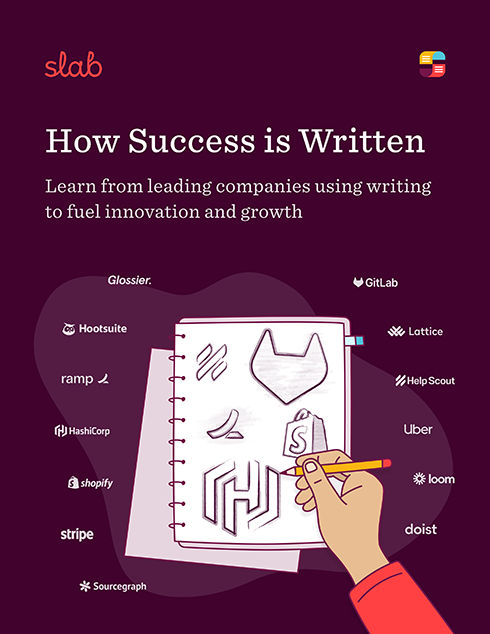Super informative, super fun: a look inside Superhuman’s writing culture
How Superhuman prioritizes delightful communication to achieve its goals
Superhuman was built around the question, “What does the best email management experience look like?” and the answer they’ve come up with is to make the fastest email platform in the world. They didn’t stop there. They also built the platform that allows people to get into a flow state and minimize interruptions in their workday.
Anita Isalska, Superhuman’s Content Lead, says this is just one part of the company’s larger goal to help people to be the best versions of themselves. Superhuman aims to add value to the world through software, content, and community. In order to align on these goals, though, it’s been imperative to achieve transparency internally first. This is where the company’s writing culture comes in.
Rule #1: Make it fun
According to Anita, knowledge-sharing at Superhuman answers a “classic startup challenge” of needing to communicate with one another in a way that levels everyone up and helps people align to team objectives. “Without good knowledge sharing, you risk duplication and missteps,” she says.
Thankfully, Superhuman has a strong framework for ensuring that good knowledge sharing can—and does—take place. This framework rests on a simple yet perhaps unexpected concept: “We’ve built our writing culture around the idea that it should be fun,” says Anita.
“People acquire knowledge best when they have an open mind and are not stressed. We can help foster that by making communication delightful.”
Fun writing doesn’t equal insubstantial writing—far from it. “Striking a balance between informative and fun when communicating with anyone is the hallmark of great writing,” says Anita. “Our goal is always to be warm, sincere, and uncluttered in what we communicate, and I see this across the board at Superhuman.”
Internal communication is intentional
Taking the time to carefully craft and document best practices then make them widely available gives the team at Superhuman firepower and speed. “Capturing a process is initially really difficult, but once you’ve documented something, you’re created a toolkit that anyone can use,” says Anita. All process documentation is then kept in a centralized wiki that each employee can view.
“When it’s easy to access information, you’re empowering people to do the best job they can.”
Writing down knowledge to turn it into a company-wide resource can be seen throughout the company. For example, Superhuman’s onboarding is a white-glove process that individually brings customers into the product. “That team is made up of excellent communicators, and when they find resonant ways of communicating our features to new customers, they tend to capture them in written form and share them with everyone," says Anita.
Having this knowledge shared widely is invaluable. “Every customer has different pain points, so lots of knowledge sharing helps us create a bank that makes it easier to reach different types of customers,” says Anita. It empowers the team to use the language of their customers, deepening value.
Documenting processes internally also encourages self-reflection for the person who’s writing them. As Anita describes it, taking the time to write something out for others forces the writer to take a step back and ask, “Is what I’m writing as good as it sounded in my own head? Can I make further refinements?” Writing through this filter allows the writer to clarify any assumptions that seem obvious, which results in a strong finished product.
Synchronous doesn’t mean reactive
How do you get more flow? With fewer distractions. Superhuman has developed frameworks for how to approach different modes of communication. The rules are simple: If an employee needs a response within 24 hours, they should use email to reach out. If they need a response sooner, they can turn to Slack—but no one is expected to answer Slack messages right away. “People can expect a Slack response within three hours,” says Anita.
Having these expectations in place ensures that Superhuman stays away from having a reactive environment. When people know they’re not expected to be reachable all the time, they feel empowered to turn off their notifications and actually get into deep work.
It also means that for employees drafting messages, knowing that they shouldn’t expect an immediate response allows them to be more thoughtful about what they’re communicating and how they’re framing it.
At Superhuman, Slack is also a place to share resources for things that aren’t company-centric, like personal growth. For example, the #allyship channel is a place where people can share and find resources for, “being better humans.”
Delightful and digestible information for everyone
While a great deal of Superhuman’s writing culture can be seen internally, these guidelines and processes ultimately set the tone for how the company interacts with its customers. Superhuman’s communication with customers is focused on being delightful and informative. The best example is the flow of onboarding emails that customers receive after signing up. Each email is “a masterclass in a different feature,” sent over 30 days to build knowledge in a way that feels digestible, encouraging, and helpful.
When thinking about the future, empowering customers is priority number one. “I’m hoping we can massively scale everything we’re doing with our productivity content,” she says, which right now lives on the company blog.
This is just one of many initiatives, however, and for a company that places so much emphasis on knowledge-sharing, there are sure to be more writing-based projects emerging in the future. As Anita tells it, they have the right barometer in place to guide them forwards. “As long as we’re delighting our customers and each other, we’re on the right track.”

